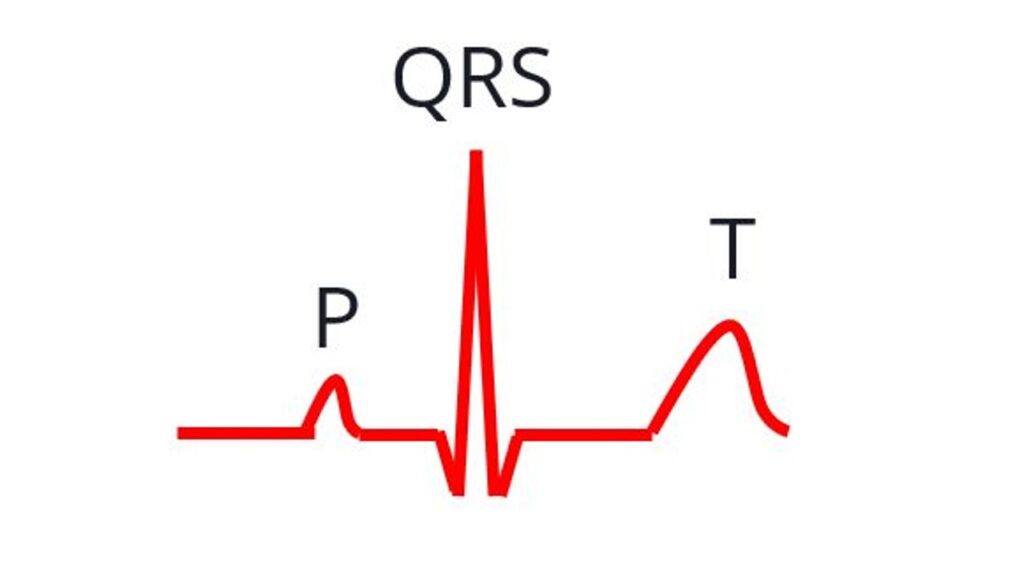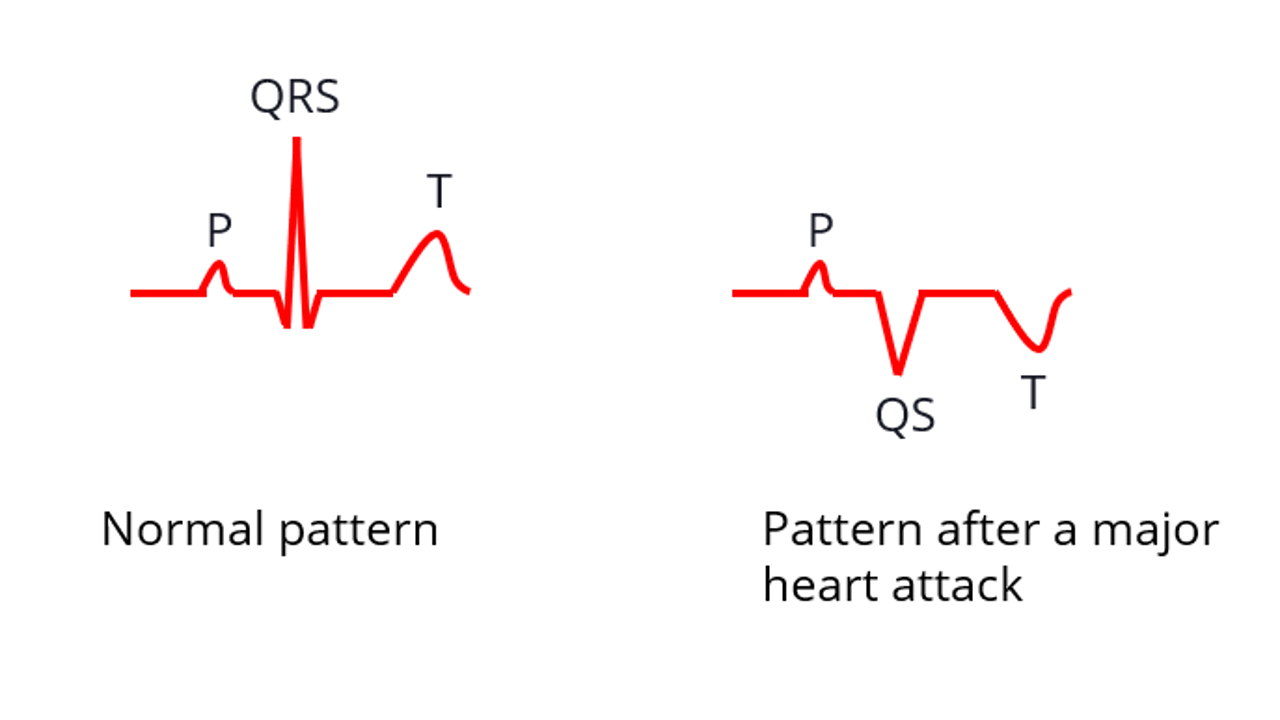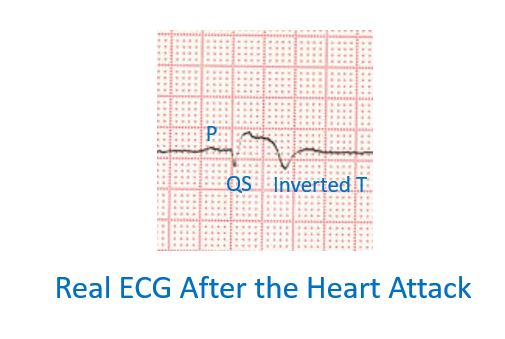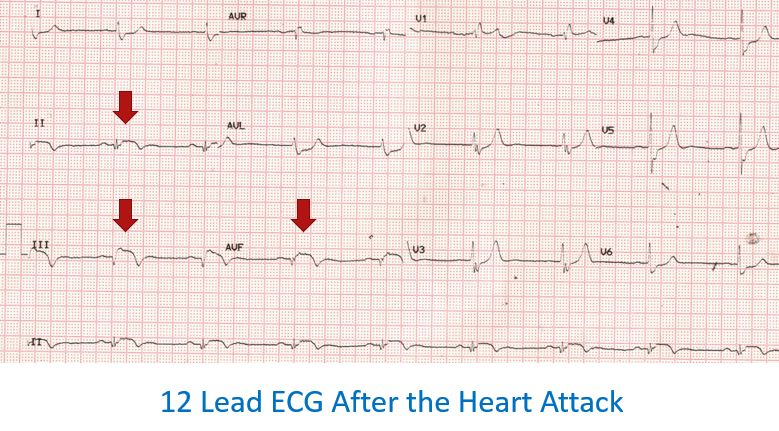Simplified explanation of ECG changes in a heart attack
Simplified explanation of ECG changes in a heart attack
My previous post explained what an ECG is. Some of you asked how ECG becomes abnormal in a heart attack. Here is a very simplified explantation.

As mentioned in my previous post, ECG has mainly a P wave representing activity of the upper chambers and a QRS complex and T wave representing the activity of the lower chambers.

In a major heart attack, the electrical activity of the heart muscle immediately below the recording electrode disappears. So, the positive part of the QRS complex disappears and a negative wave appears. T wave also gets inverted usually, though the P wave generated from the upper chambers is usually spared.

Of course, this is a highly simplified explanation of what is seen in an ECG after the heart attack is fully established. Picking up a heart attack earlier requires more expertise. Expertise is also needed to rule out causes other than heart attack which can sometimes cause ECG abnormalities and normal variations.

Many of the modern computerized ECG machines have built in software which can detect a heart attack in its early stage and display the interpretation in the ECG printout. But errors can occur and always needs a careful interpretation by the medical personnel correlating with symptoms and signs in the person.



